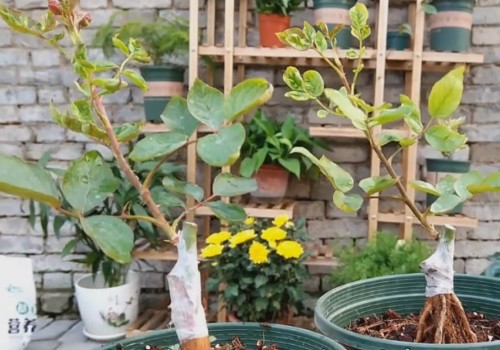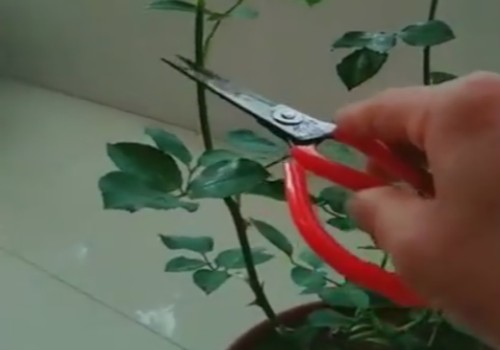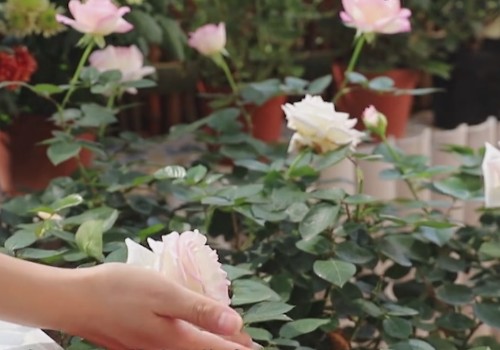How to maintain and manage rose grafting after survival
Rose can cultivate many excellent varieties on the same rootstock by means of grafting, generally using rose as rootstock. And there are many ways of grafting, such as cutting, bud grafting, root grafting and so on. However, after the survival of rose grafted seedlings, maintenance and management is very important. So, how to maintain and manage after the grafting of rose survived?

First, pinching in time to avoid overgrowing or blooming prematurely
If the grafted seedlings blossom prematurely, the original will soon deplete the nutrients of the whole plant, so generally when the grafted seedlings grow more than 5-6 leaves, you can choose to keep 4-5 large leaves. Then the grafted seedlings were pinched or topped to avoid excessive nutrient consumption due to overgrowth or early flowering.
After pinching, the leaves left on the grafted seedlings will continue to carry out photosynthesis to produce energy, and the more energy and nutrients accumulate, the plant's root system will grow more and more powerful, so the rose grafted seedlings will be topped in time, which is very beneficial to the root development and growth of the plant.
Second, timely topdressing should be based on water-soluble fertilizer.
If we fertilize the grafted seedlings at this time, it is generally not recommended to use compound fertilizer, because the compound fertilizer is not easy to control, a little carelessness may cause fertilizer damage and burn out the grafted seedlings. At this time, it is appropriate to apply fertilizer with strong water solubility, and it is recommended to mix in 2:
One is a common water-soluble fertilizer, which is diluted and watered according to 1, 000 times of water. This kind of water-soluble fertilizer is not only rich in nitrogen, phosphorus and potassium, but also contains many medium and trace elements, which can inhibit or reduce yellow leaves.
The other is beneficial microbial fertilizer, and then diluted with water in an appropriate proportion and then irrigated to the grafted rose seedlings, especially in the pot environment, is very safe and healthy. And it is not easy to make the plant root nodule disease, nor is it easy to breed a variety of harmful bacteria, which can effectively inhibit the growth of harmful microorganisms.
Of course, if we do not consider the economy, we can also go to the flower market to buy special water-soluble fertilizer, the effect is also very good. After all, when many flower friends prepare their own water-soluble fertilizers, they often get the wrong proportion, which is prone to unreasonable proportions.
To sum up, rose needs to be topped in time on the one hand and water-soluble fertilizer on the other hand after grafting. Through this management, the plant not only grows well, but also grows stably. Of course, if necessary, we can also build a support for the plant, otherwise the graft joint will be broken by the wind, which will bring us unnecessary losses.
Time: 2019-05-28 Click:
- Prev

How to maintain rose in winter
Perhaps in the eyes of many friends, autumn is short, and winter has come quietly before we can enjoy the coolness of autumn. For many people who like to plant and grow rose in pots, it is a big thing nowadays if you let your beloved rose survive the winter safe and sound.
- Next

How to raise potted rose in winter
Rose can blossom in the four seasons, not only the flowers are diverse, but also rich in color, and the flowers are accompanied by rich fragrance, which has high ornamental value. At the same time, rose can also be used as medicine to treat diseases, so as a family pot cultivation, the practical value is very high. But with the coming of winter, the temperature is getting lower and lower.
Related
- Fuxing push coffee new agricultural production and marketing class: lack of small-scale processing plants
- Jujube rice field leisure farm deep ploughing Yilan for five years to create a space for organic food and play
- Nongyu Farm-A trial of organic papaya for brave women with advanced technology
- Four points for attention in the prevention and control of diseases and insect pests of edible fungi
- How to add nutrient solution to Edible Fungi
- Is there any good way to control edible fungus mites?
- Open Inoculation Technology of Edible Fungi
- Is there any clever way to use fertilizer for edible fungus in winter?
- What agents are used to kill the pathogens of edible fungi in the mushroom shed?
- Rapid drying of Edible Fungi

